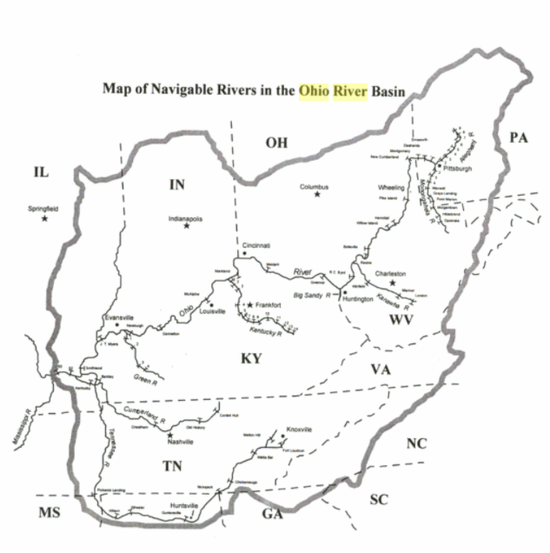Ohio River
Jump to navigation
Jump to search

This article is about Ohio River. For other uses of the term Ohio, please see Ohio (disambiguation).
The Ohio River is the largest tributary of the Mississippi River, by volume. It flows for 981 miles from Pittsburgh to where the river empties into the Mississippi at Cairo, Illinois.
The Ohio River drains a basin of 204,000 square miles.[1] The Allegheny and Monongahela rivers meet at what is now Pittsburgh, Pennsylvania, to form the Ohio.[2] Other tributaries include the Green, Cumberland, Tennessee, Beaver, Muskingum, Scioto, Miami, and Wabash rivers.
Before engineers built locks, and dredged shallow reaches, the river's average speed was five miles per hour.[1]
The Falls of the Ohio, at present day Louisville, Kentucky, was the only navigational obstacle on the Ohio, until it was circumvented by a canal.
References
- ↑ Jump up to: 1.0 1.1 Michael C. Robinson (January 1983). History of Navigation in the Ohio River Basin. US Army Corps of Engineers. Retrieved on 2021-03-15.
